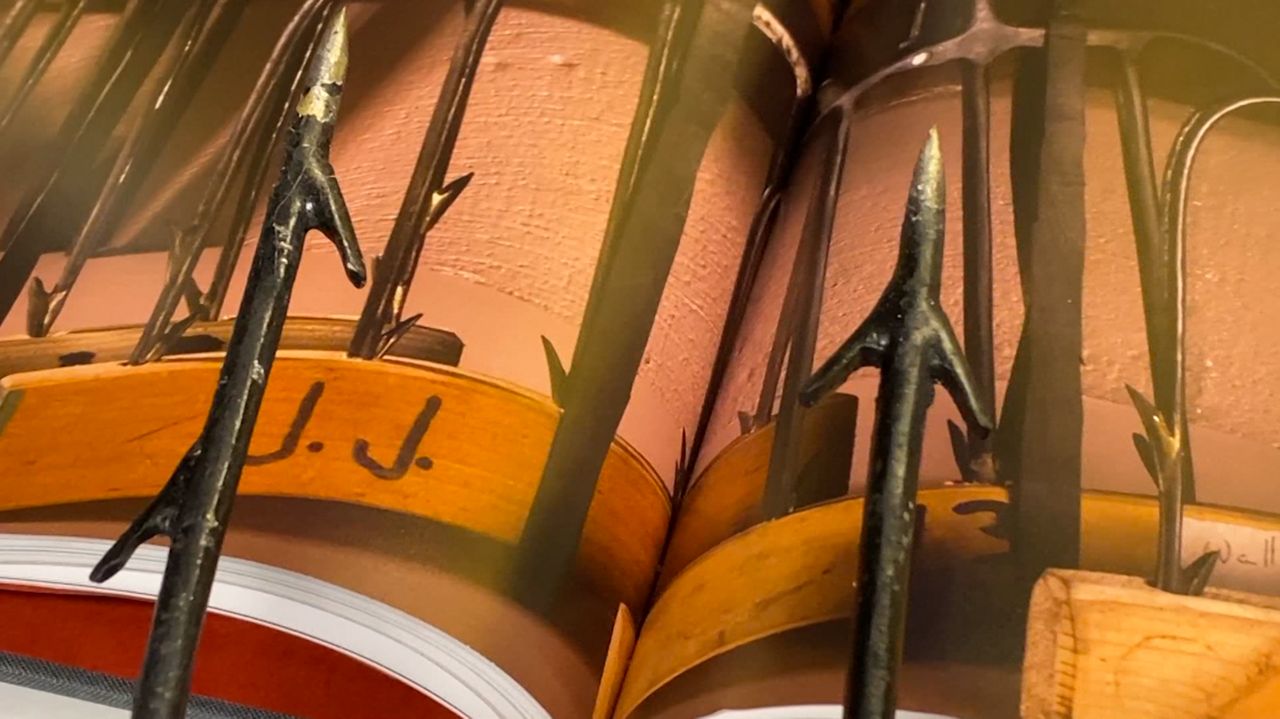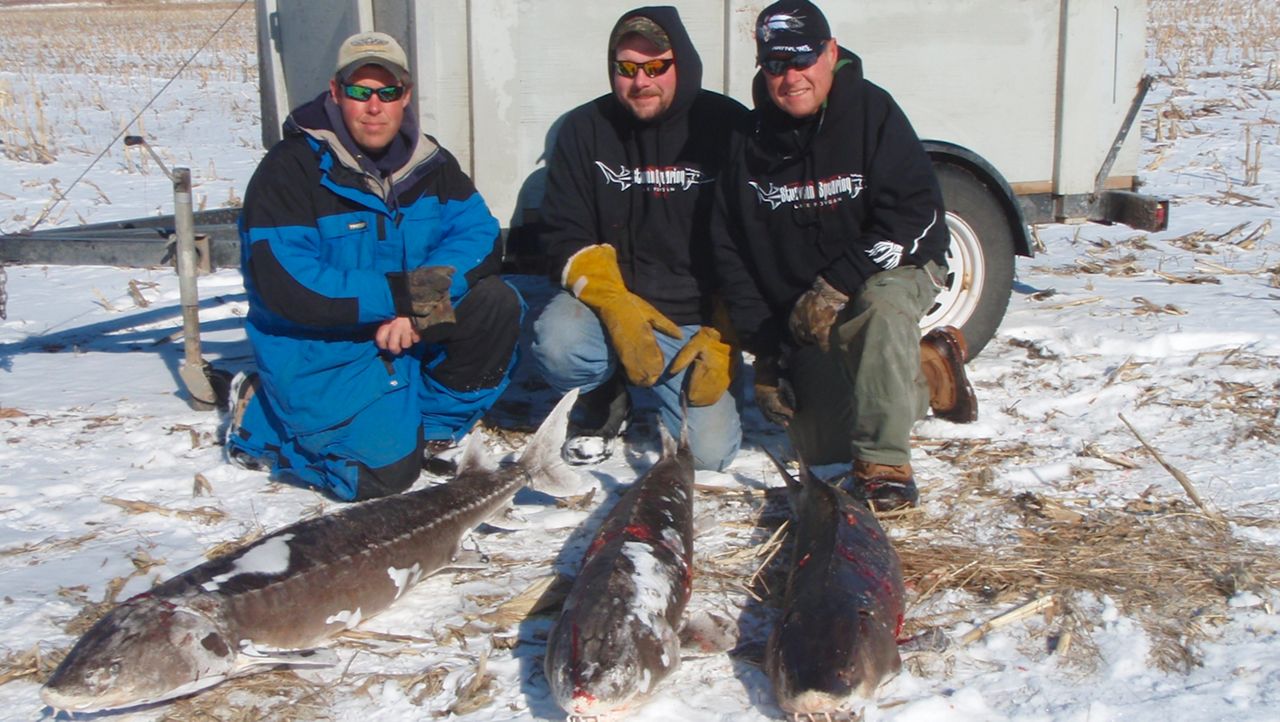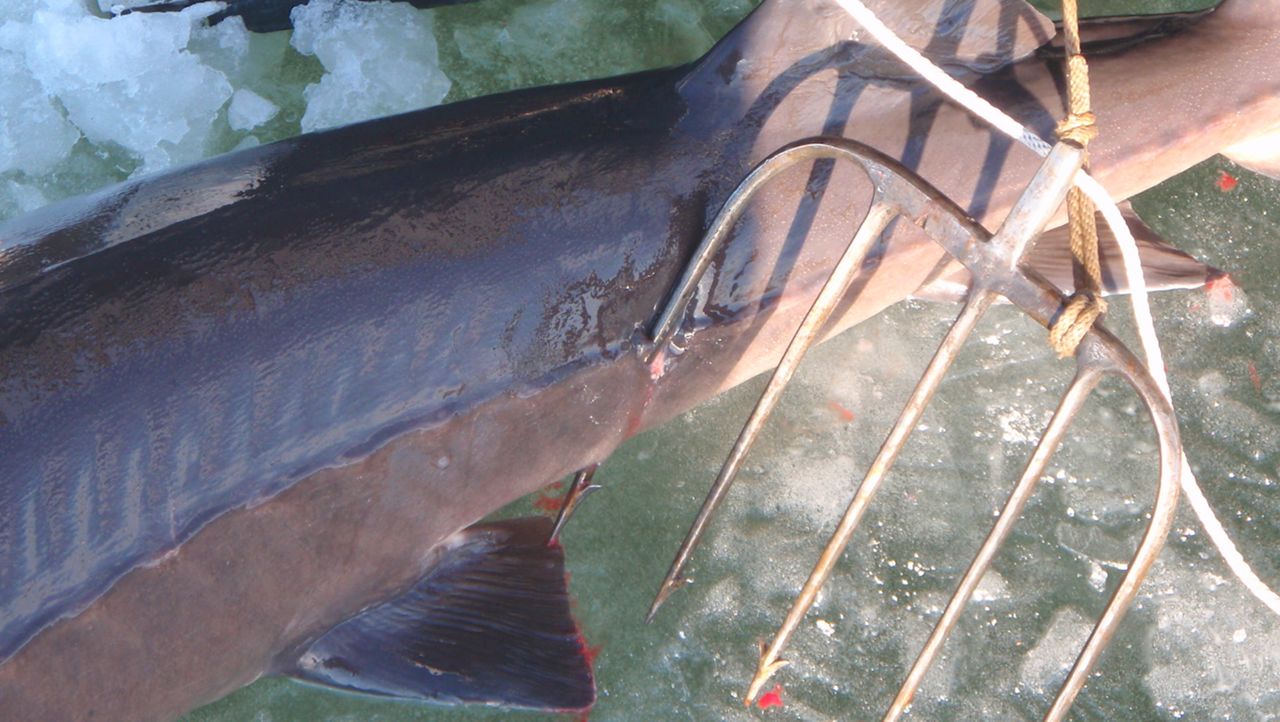NEENAH, Wis. — Over the years, Rich Relien has spent plenty of hours in his basement workshop crafting sturgeon spears. The ex-firefighter is always looking for old pitchforks to heat, bend and shape.
What You Need To Know
- Wisconsin sturgeon spearers often create or adapt their gear
- Rich Relien learned from the Jorgensen family how to make his spears
- Sturgeon spearing begins Feb. 11 and can last up to 16 days
- Relien still makes spears but only for those in his fishing party
“They make the best spears, the old ones, and I always look at the junk shops if I can find them,” said Relien.
It’s his least favorite part of the process. With his blowtorch flame warming the metal, Relien said newer pitchforks aren’t as easy to shape as older ones.
“A little at a time, heat ‘em up. I hate this part,” said Relien.

According to Relien, he learned the craft from some of the best. He spent years fishing with the Jurgensen family and learned how to make their spears.
“The original Jurgensen spears. Not much has changed. I try to keep them as close as I can,” said Relien.
For years, Winnebago spear fishers improvised their gear with whatever materials were on-hand.
“When I started back in the 70s, sturgeon fishermen were mostly mill workers on shift work or laid-off construction guys,” explained Relien. “These guys, they’re good mechanics and very intuitive.”
Besides spears, homemade ice cutters, shanties, and lures are crafted for the uniquely Wisconsin event. Black Lake in Michigan is the only other place in the country where sturgeon spearing is legal. Their season usually lasts a couple of hours. The Lake Winnebago system season can go up to 16 days.
Margaret Stadig oversaw her first spearing season as a lake sturgeon biologist last year. She said she enjoyed hearing stories from spearers about the local history.
“They talk about fishing with their mom and dad and their grandmom and dad. I talked to one recently about how they used the horses to pull the ice shanties out on the lake. The amount of culture that goes into this is mind-blowing,” said Stadig.

The experience is like no other for Relien.
“You’ll see families out there that are literally the fourth generation doing this,” explained Relien. “It’s in the blood. Somebody says, ‘why do you do this?’ I said, ‘what else would you do in February in Wisconsin?’”
Relien said there are plenty of other great spear makers in the area, some with more modern designs. But this is simply the one he knows.
“If it isn’t broke, don’t fix it,” said Relien.
He prefers to carry on with the spear the Jurgenson’s perfected for generations.
“Ottie Jurgensen was one of the original spearers out of Neenah. They would chop one big hole and never move all season. They knew what they were doing and would fish from morning until night. This was before there was an actual season. They would go out there and just sit and spear walleyes and spear sturgeon. That’s the way it was,” said Relien.

Relien said the Jurgensen design was mainly influenced by what materials they had available. He still pushes a potato down the metal pole as a stopper when he adds lead to give it proper weight.
They still work. Relien only makes them for spearers in his fishing group and said he still gets a thrill when one of his spears helps haul in a fish.
He’s modest about his craft but seems certain about a couple of things: Spears like his, with a detachable head, are more likely to bring in the fish and sturgeon spearers are a resilient, problem-solving bunch.
“If I was ever trapped somewhere, I’d rather be trapped with a bunch of sturgeon fishermen because they’re going to get you out of it,” said Relien.
And they’re likely to do so by using whatever resources are available.



